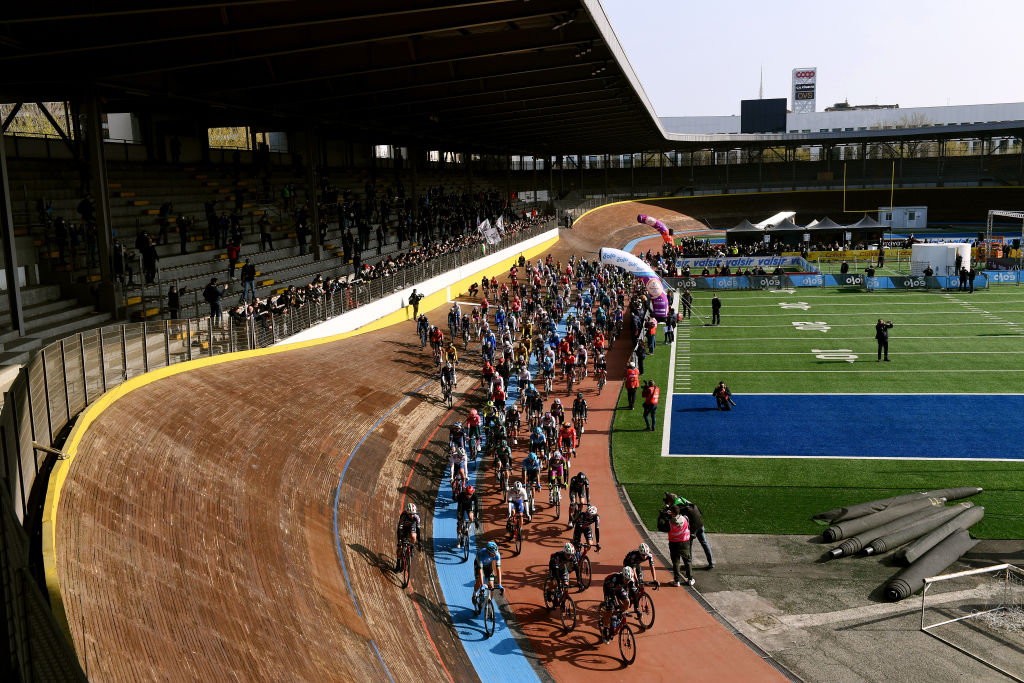Milan-San Remo weather watch: Tailwinds set to inspire fast and aggressive race
'You can really can fly up those climbs with a tailwind' warns Pogacar

Sunday marks the official start of spring in the northern hemisphere but mild weather and an easterly tailwind for much of this year's Milan-San Remo race route should make it feel like spring has already sprung and create a classic edition of La Primavera.
There will be no snow like there was in 2013, which saw the Turchino climb cut from the course and riders transported by bus to the Ligurian coast for a restart. Instead the flowers of San Remo will be in bloom, the sun will turn the Mediterranean blue, with the crowds happy to return to cheers the riders from the roadside after two years of COVID-19 restrictions.
It was just 8°C this morning as the riders gathered for the start in the shadows of the legendary Vigorelli velodrome and the skyscrapers of the thriving City Life area of Milan. But the riders were happy to know that they will race in dry conditions, with the temperatures rising throughout the day.
After the long ride south across the Lombardy plains to Pavia and Tortona, a tailwind is set to kick in for much of the gradual 24-kilometre climb of the Passo del Turchino.
The riders will notice the warmer temperatures, brighter sun and true spring-like conditions when they descend to Genoa and then ride along the Mediterranean coastline. Italian weather forecasts expect sunny, 17°C weather in San Remo and a brisk 25kph tailwind along the Ligurian coast for the final 100 kilometres.
That should spark a fast race, with average speeds of 45kph even for the 293 kilometres and near seven hours of racing.
The tailwind along the coast should suit the attackers like Tadej Pogačar, Wout van Aert and Filippo Ganna. They will arrive fresher in the final part of the race, be blown up the coastal capi climbs and then over the top of the Cipressa and the Poggio.
Get The Leadout Newsletter
The latest race content, interviews, features, reviews and expert buying guides, direct to your inbox!
A headwind would usually slow or dissuade attacks, favouring the sprinters and their teams hoping for a closed race and sprint finish in the Via Roma. A tailwind will help any attacks on the higher, exposed roads of the Cipressa, helping them get away and then convincing the riders to continue with their effort over the top and on the flat coastal section towards the Poggio.
A tailwind will also give the sprinters an easier ride for much of the day but they and their teammates will have to go hard and fast to chase down the wind-assisted attacks.
The Poggio climb is so often decisive at Milan-San Remo and will surely see attacks launched even if Pogačar and his UAE Team Emirates squad have already forced a split or selection over the Poggio.
The early part of the Poggio turns back east into the wind for the opening two kilometres until the Santuario Madonna della Guardia chapel but then the riders will enjoy a tailwind on the final 1.7-kilometre section and especially on the final kilometre that is on the exposed side of the famous hill.
After the famous sharp turn to start the descent of the Poggio, all that remains are the rising roads though the greenhouses, the two-kilometre sheltered run-in to San Remo and the finish up the gently riding Via Roma in centre of town.
The tailwind means the 2022 Milan-San Remo will be a race of big gears and big power all day.
"It's going to be really fast until the climbs, and also the climbs will be much faster because it's no headwind, almost nothing, you can really can fly up those climbs with a tailwind," Pogačar suggested, happy with the forecasts.
The forecast seems to have inspired Pogacar ands his plans to attack on the Cipressa, raising his spirits after a few days of suffering with a cold.
"An attack on the Cipressa is suicide? Maybe not. If you're good, you can go clear," he suggested mischievously.
"In the last couple of years, it was mission impossible, but you never know. In modern cycling, we have seen so many attacks from long distances. Maybe we can see it at Milan-San Remo as well."

Stephen is one of the most experienced member of the Cyclingnews team, having reported on professional cycling since 1994. He has been Head of News at Cyclingnews since 2022, before which he held the position of European editor since 2012 and previously worked for Reuters, Shift Active Media, and CyclingWeekly, among other publications.